
So what is a fungal infection? This is a disease caused by fungi, in very large quantities in nature. Today there are more than 200 different species of mushrooms. Where do fungi live and how do people get infected?
The fungus is widely spread in the environment. They live in soil, on plants, on animals and there is even a saprophytic fungus that lives happily with us, viz. live on human skin. Fungi that cause diseases in humans and affect the skin are called dermatophytes, and these diseases are called dermatoses.
Infection can occur in two ways: direct infection through contact with soil, plants, sick animals or sick people; indirect - contact with various objects and objects used by the patient, as well as through animal care items.
Why do fungal infections occur?
The likelihood of fungal infection is determined by many factors: weather conditions (hot season), state of the immune system, skin condition and presence of accompanying diseases. Age, gender and professional factors are also important. Of course, more often, manifestations of the disease occur in the hot season, after returning from the sea, where a hot and humid climate prevails, accompanied by heavy sweating.
These factors are especially favorable for the invasion of pathogenic fungi and the transformation of saprophytic microorganisms into pathogenic flora.
What are the types of fungal infections?
There are mainly 4 groups of fungal diseases:
They are quite superficial because they affect the stratum corneum and cuticle of the hair without causing an inflammatory reaction and do not affect the skin appendages (hair, nails). The most common disease of this group is pityriasis multicolor, or pityriasis multicolor. It is manifested by the appearance of cafe-au-lait spots, mainly on the chest, back and waist.
This is a large group of fungal diseases that affect the skin, hair and nails. The most common disease of this group is athlete's foot or athlete's foot. This disease is very common in adults - about 80% have it.
A huge role in preventing fungal diseases is played by treating shoes, treating manicure and toenail clippers with special antifungal agents, in the form of solutions and sprays.
It is also important to prevent excessive sweating of the skin of the feet, if necessary. Treatment depends on severity.
Course and extent of use of local and systemic antifungal therapy.
In the last few years, a modern method has been successfully used in the treatment of onychomycosis (onychomycosis) - laser onychomycosis treatment.
Prevent fungal diseases
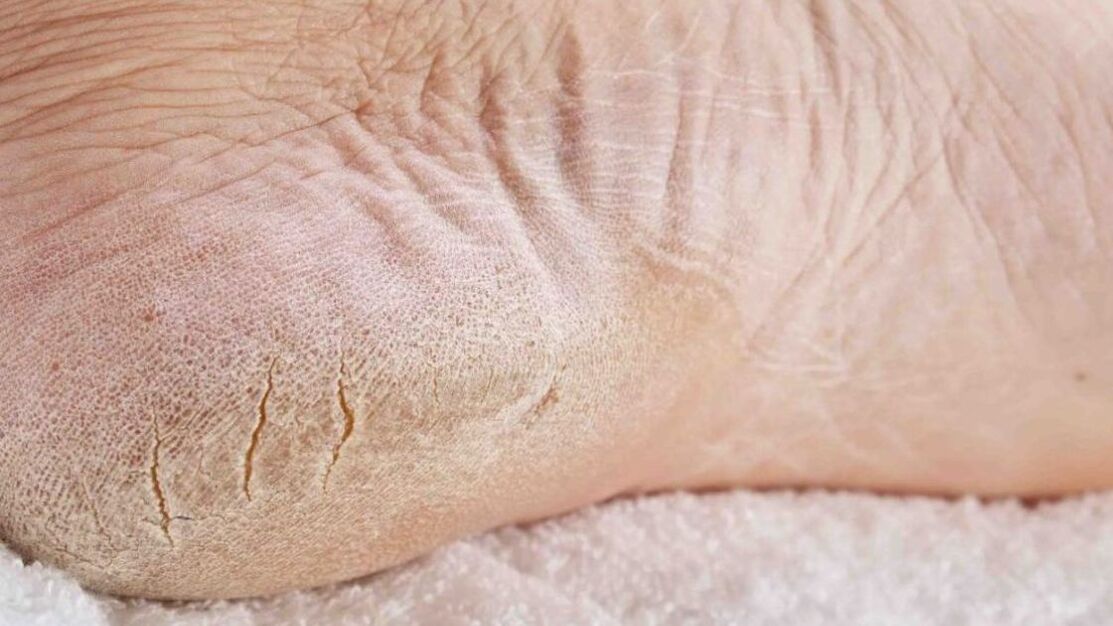
Fungal disease, also known as fungal disease, is an infectious disease caused by pathogenic fungi.
Fungal infections can affect many different organs. In this case, the symptoms can be very different, depending on which organ is affected and what type of fungus. There are many types of fungal infections, but forms that affect the skin and nails are the most common. Mycoses are infectious and transmitted from person to person.
Fungal diseases can appear on any part of the human body: on the trunk, on the limbs, on the scalp, on the palms of the hands, on the soles of the feet, between the fingers, in the groin and even onface.
If a fungal disease is detected in a family member, all family members need to be carefully examined, and if it is a child, then the people caring for the sick child as well. It is also necessary to carefully check for the presence of fungal diseases, children entering orphanages, kindergartens, schools and similar institutions.
It is especially important to screen students before leaving and after arriving at summer camp.
If you suspect the presence of mycosis, you should consult a dermatologist and get tested for fungus. Before consultation, it is best to cut your hair short, this makes it much easier for you to recognize fungal diseases.
When there is the slightest suspicion of a fungal disease in a child, it is advisable to prohibit him from going to school or kindergarten. Immediately after confirming the diagnosis, treatment must begin; in no case should the patient be allowed to come into contact with healthy children.
Any object that the patient touches can be contaminated and poses a risk of infection or reinfection to the patient. Each such item must be disinfected or destroyed. Clothes are sterilized in a formalin or steam chamber. Bed sheets are sterilized by boiling for 20 minutes.
Prevention of fungal diseases in hairdressing salons, baths and showers should be carried out regularly, at intervals of no more than 3 months. Metal objects should be thoroughly sterilized with dry heat, other objects in a formalin vapor chamber.
The prevention of fungal diseases in animals is of great importance, since humans are very often infected with trichophytosis and microsporia from animals.
It is necessary to build hygienic barns and veterinary inspection services on collective farms.
People who have come into contact with sick animals should comply with hygiene rules and monitor their skin condition, as they can become a source of further spread of the disease, both between humans and animals.
Cats and dogs can be carriers of microsporum, which is the source of microsporiasis. Animals suspected of carrying fungal infections must be referred to special veterinary facilities, but they should never be simply euthanized because they will be infectious. But there are also known cases where the carrier of the disease is a rat.
Preventive measures are necessary to reduce the likelihood of infection of healthy people, so as not to turn them into carriers of fungal infections. Systematic disinfection of premises is one of the most important points in the prevention process. It is done with a five percent chloramine solution, then everything is washed with a five percent soap solution.
Skin damage caused by fungi
Fungal skin infections are quite common. Can affect any part of the body. To avoid diseases, hygiene and sanitation rules must be observed. Treating fungus is a complicated process, so don't delay seeing a doctor.
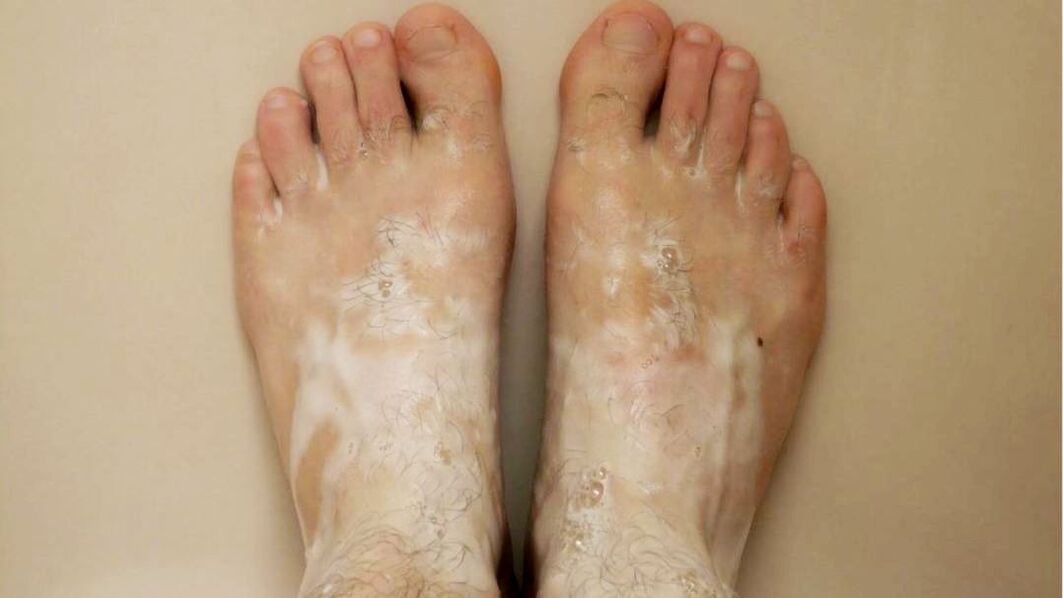
Preparations to prevent foot fungus
Athlete's foot is an infectious disease accompanied by the appearance of blisters, peeling, itching, cracking, etc. v. To prevent disease, you need to maintain foot hygiene and use antifungal medication.
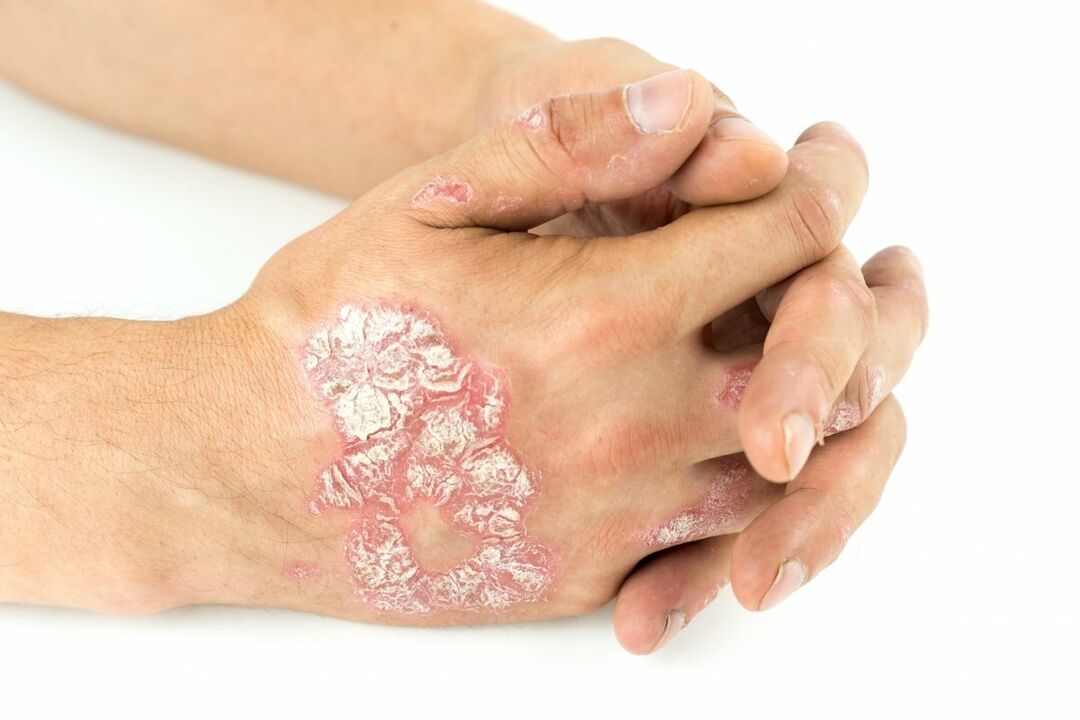
Treatment of skin fungus
Skin fungus or fungal disease often occurs in people with weak immune systems. Affecting the skin, the disease often becomes chronic, reducing the body's resistance. There are different types of fungal diseases, treatment must be carried out individually.

Fungal diseases of male genital organs
A separate type of male disease is mycosis of the male genital organs, which is characterized by specific transmission - only through sexual intercourse. Therefore, it is extremely important to pay attention to your health and take preventive measures.
Prevent fungal diseases. Methods of primary prevention of mycoses
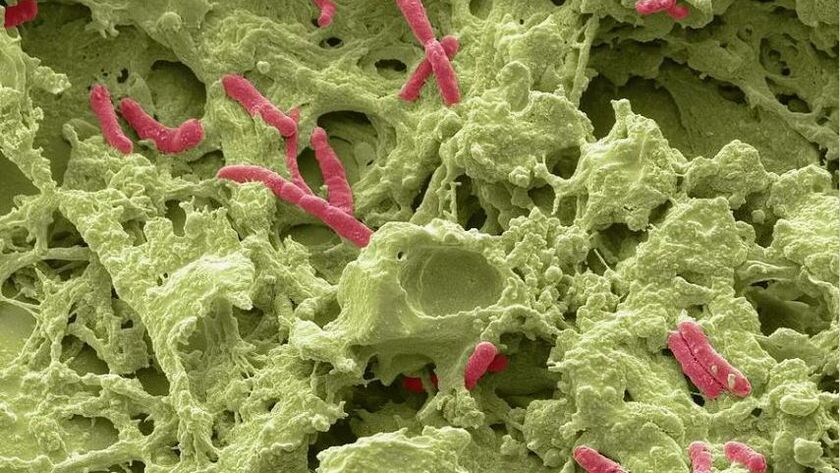
To prevent pathogenic fungal infections, you must adhere to several rules:
- Maintain personal hygiene. All contact in public places must end with hand washing. To do this, simply wash your hands thoroughly or apply an antiseptic solution.
- Public places should be visited with caution. Saunas, toilets, showers and bathtubs are "breeding grounds" for pathogenic microflora. Avoid contact with surfaces in such areas.
- Avoid contact with infected people or animals. This also applies to objects used by the patient.
The first feeling of discomfort on the skin or its appendages should not be ignored. It is better to see a specialist to determine the cause and be able to prescribe the correct treatment.
Causes of the development of athlete's foot
Athlete's foot is a skin lesion caused by parasitic fungi. A very common disease among the population. The surface of the feet and back, the interdigital space, and the nails are all involved.
The causative agent is the fungus Trichophyton, of which there are two types. The first is red trichophyton, the second is interdigital. The last type is the most common. According to WHO, up to 30% of residents in developed countries have dermatological diseases on the skin of their feet. This is related to wearing shoes continuously, thereby creating the most favorable conditions for foot fungus to develop.

Causes of fungal diseases
The infection is transmitted mainly through contact - through personal belongings and household items. Horny skin particles, infected with spores of pathogenic fungal strains, are a direct source of infection for others.
Microorganisms grow most strongly in humid environments. Walking barefoot in public places - bathing, sauna, showering - creates favorable conditions for fungal infection.
Getting into small cracks, scratches and diaper rash on human skin, the spores will grow into filamentous bodies of fungi - hyphae. It penetrates deep into the epidermis, creating lesions.
The causes of the development of fungal diseases are:
- reduced immunity due to chronic diseases;
- diabetes;
- varicose veins, thrombophlebitis;
- age over 60 years old.
These factors reduce the protective function of the skin, creating conditions for pathogens to penetrate. At risk are metallurgists, miners, soldiers and athletes - anyone who, due to duties or working conditions, is forced to regularly wear water and vapor resistant shoes.
Intracellular mycoses of the feet are common. Being near an infected family member is the shortest route to transmitting harmful fungal diseases.
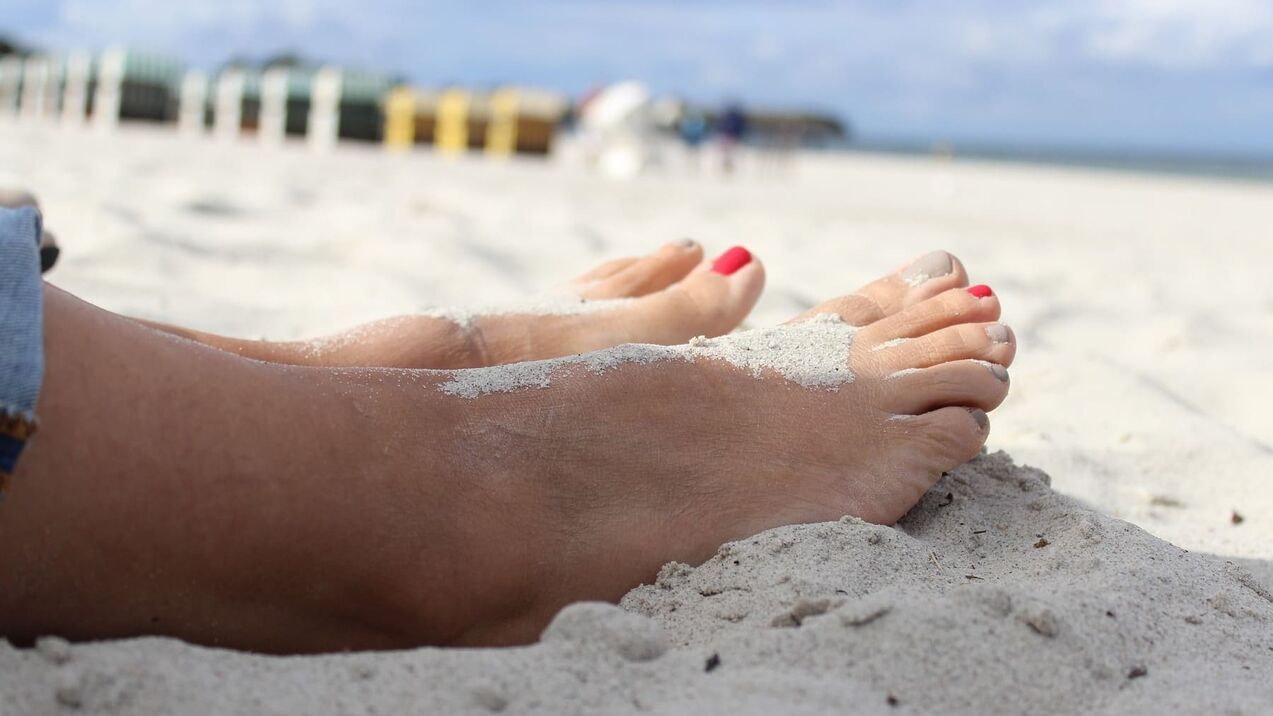
Symptoms of fungal infection
Fungal disease of the feet is manifested by many signs of skin destruction. Depending on the nature of skin lesions, forms of mycosis are distinguished:
- Deleted. The surface of the foot peels and diaper rash appears between the toes. Itching is minor. Patients often do not take this seriously, considering fungal symptoms as irritation or using ineffective home treatments.
- Scale-hyperkeratosis. This shape is also known as "moccasin feet" due to the thick, rough leather sole covered with cracks. Skin damage is significant - peeling off in large, yellow-gray patches. There is pain when walking and an unpleasant odor. The disease often affects older people.
- Wet (blisters, dehydration). Its peculiarity is the formation of small pink bubbles, which over time merge into large bubbles. The disease starts from the arch of the foot, then spreads to the entire foot and toes. When the bubbles burst, they form erosion pockets. The skin is swollen and itchy.
- Continuous. Characterized by damage to the interdigital space. The skin loosens, becomes moist and swells. Severe itching and burning appear. Over time, deep, painful cracks form, preventing normal walking.
- Spicy. Severe form of fungal disease. It is characterized by fever, inguinal lymphadenitis, and swelling of the feet and legs. The feet are covered with blisters containing pus. After opening them, ulcers form, causing physical pain to the patient.
Fungi cause disease, eat human body cells, and release toxins that are toxic to the body. The protective function of the skin and general immunity decrease. The lesions are an open door to bacterial and viral infections. Treatment of fungus is necessary to maintain normal health and spirit.
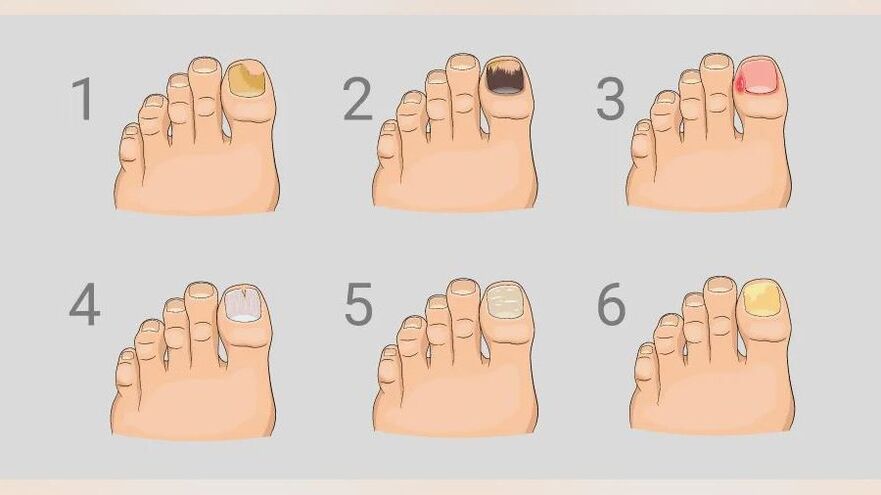
Diagnosis of athlete's foot
Diagnosis and treatment of athlete's foot is performed by a dermatologist and a mycologist. Identification of the type of fungus is carried out using laboratory methods - studying tissue samples under a microscope. One culture method to determine the type of pathogen is to place the inoculum in a nutrient medium. At the same time, the cause of mycosis is being determined. Conduct testing for HIV, blood sugar, and STDs.
Based on the results obtained, the doctor makes a diagnosis and prescribes treatment. This can be monotherapy or complex treatment using external agents and drugs.
How to treat athlete's foot
Ringworm treatment is successful when patients take medications and perform procedures responsibly. Modern drugs have a friendly effect on the liver and effectively destroy the mycelium of the pathological form of fungi.
For the wet form of the fungus, the wound is first dried with a solution of potassium permanganate, brilliant green, iodine or boric acid. In the treatment of this type of fungal disease, drugs containing corticosteroids are indispensable. "Moccasin feet" are cleaned of keratinized layers by wrapping with salicylic acid. They soften rough skin, are easy to clean after the procedure.
Treat foot fungus with folk remedies
Homemade recipe in the form of:
- declaim food;
- ointment;
- lotion;
- compressed.
- medicinal decoctions and infusions.
Bathing takes 15-20 minutes. The solution is prepared by adding acid - acetic, boric or a mixture of salt and soda. They soften the stratum corneum well. After the procedure, dry your feet and lubricate them with birch tar. After an hour and a half, remove the remaining medicine with a napkin. Course – from 3 to 5 times. Onions and garlic in compressed form have a good disinfecting effect on the surface of the feet. Used in mixtures with oils. For minor skin wounds, decoctions of oak bark, celandine juice, lemon and tea tree or fir essential oils are effective.
Important. Folk remedies have no contraindications, but their use is most effective when combined with drug treatment.
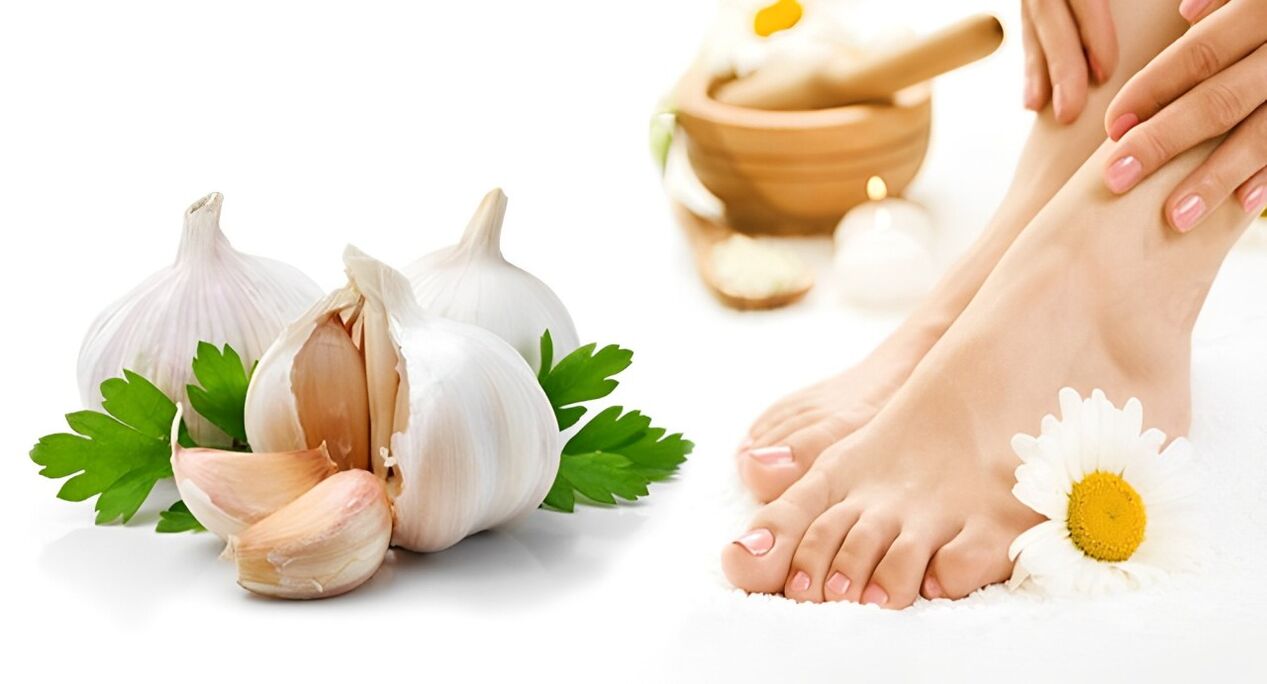
Consequences of athlete's foot
Like any infectious disease, athlete's foot affects the cells of the human body. Penetrating into the thickness of the skin and feeding on its components, fungal hyphae grow into epithelial layers. This is not noticeable to the body. Local and general immunity decreases. Allergic reactions may occur and asthma symptoms may increase. Infections are caused by bacteria and viruses entering open wounds. Fungal infections can be accompanied by more serious illnesses.
Important. Mycosis of the feet creates a danger for both the carrier of the dermatophyte bacteria and its immediate environment. People with poor health are most susceptible to fungal diseases. It is necessary to cure fungus to protect yourself and others.
Prevent foot fungus
The main preventive measures should be aimed at:
- Avoid contact with possible sources of fungal infection;
- maintain personal hygiene;
- maintain a healthy lifestyle;
- treatment of chronic diseases.
If signs of athlete's foot appear, you should consult a specialist and proceed with prescribed treatment. If preventative measures are taken, it is quite rare for athlete's foot to return.
Fungal infections in the body: symptoms and treatment
The human body is home to many types of viruses, fungi and bacteria. All of these microorganisms can be beneficial, opportunistic or pathogenic. Furthermore, the last two types are not harmful as long as a certain balance between microorganisms is maintained.
Fungal infections
The human body is home to many types of viruses, fungi and bacteria. All of these microorganisms can be beneficial, opportunistic or pathogenic. Furthermore, the last two types are not harmful as long as a certain balance between microorganisms is maintained.
The greatest danger is presented by a fungus - a type of microorganisms that can lead to damage to the skin and internal organs of humans. There are about 500 species of fungi that cause fungal diseases in humans. What fungal infections can cause serious illness in humans and what treatments are used to eliminate the causative microorganisms?
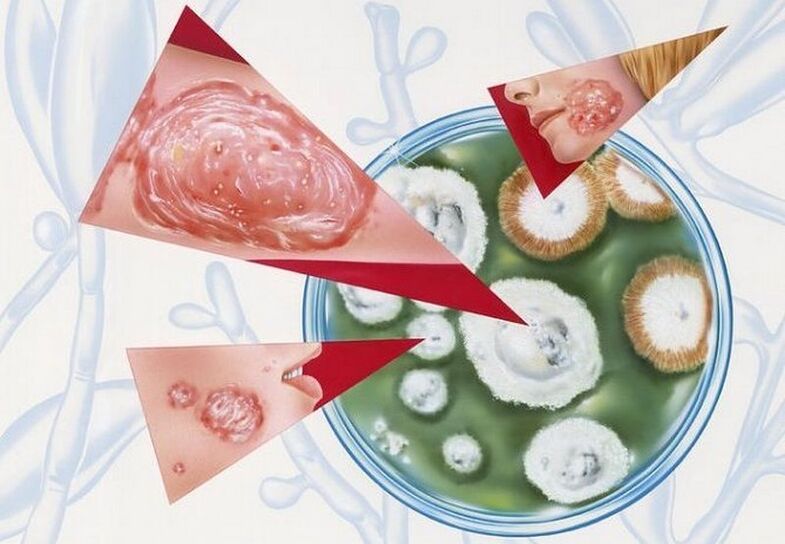
Types of mushrooms
All types of fungi that can live in the human body are divided into several types:
- yeast;
- moldy;
- dominate.
Fungi are multicellular
Yeast lives in the human body, as part of its microflora. They are opportunistic, as they do not pose a health risk, as long as balance is maintained. All other fungi are pathogenic and pose a real threat to human health and life.
Fungi can multiply both on the surface of the skin and nails and inside the body. However, a healthy person, as a rule, is not affected by a fungal infection because it is destroyed by cells of the immune system. Therefore, the most favorable conditions for the activity of fungi are created in the bodies of people with weak immunity.
Characteristics of skin fungus
The skin is very often infected with fungi. Furthermore, it does not spare women, men or children. This disease is divided into several main groups:
- athlete's foot;
- Venereal diseases;
- spore disease;
- candidiasis;
- trichophytosis.
Athlete's foot is a fungal disease caused by fungi of the genus Epidermophyton. It most commonly affects men. With athlete's foot, not only the top layer of skin but also the nails are affected.
There are two forms of this disease:
- athlete's groin;
- athlete's foot.
Dermatomycoses are a group of fungal skin infections that affect one in five people on the planet. In this case, fungal diseases can develop not only on the skin, but also in internal organs.
Sporotrichosis is a chronic fungal disease caused by fungi of the genus Sporotrichium. Infection occurs through contact with grass, shrubs, soil, street dust and even food. In this case, the skin and subcutaneous tissue are most often affected. Mucous membranes and internal organs are very rarely exposed to fungi.
Candida is caused by yeast of the genus Candida. These microorganisms are part of a healthy microflora and perform important functions in the human body. However, when favorable conditions are created, Candida begins to actively multiply, disturbing the balance of bacteria, which leads to the development of candidiasis. Most often, candidiasis or thrush appears in the vagina in women and in the mouth in children.
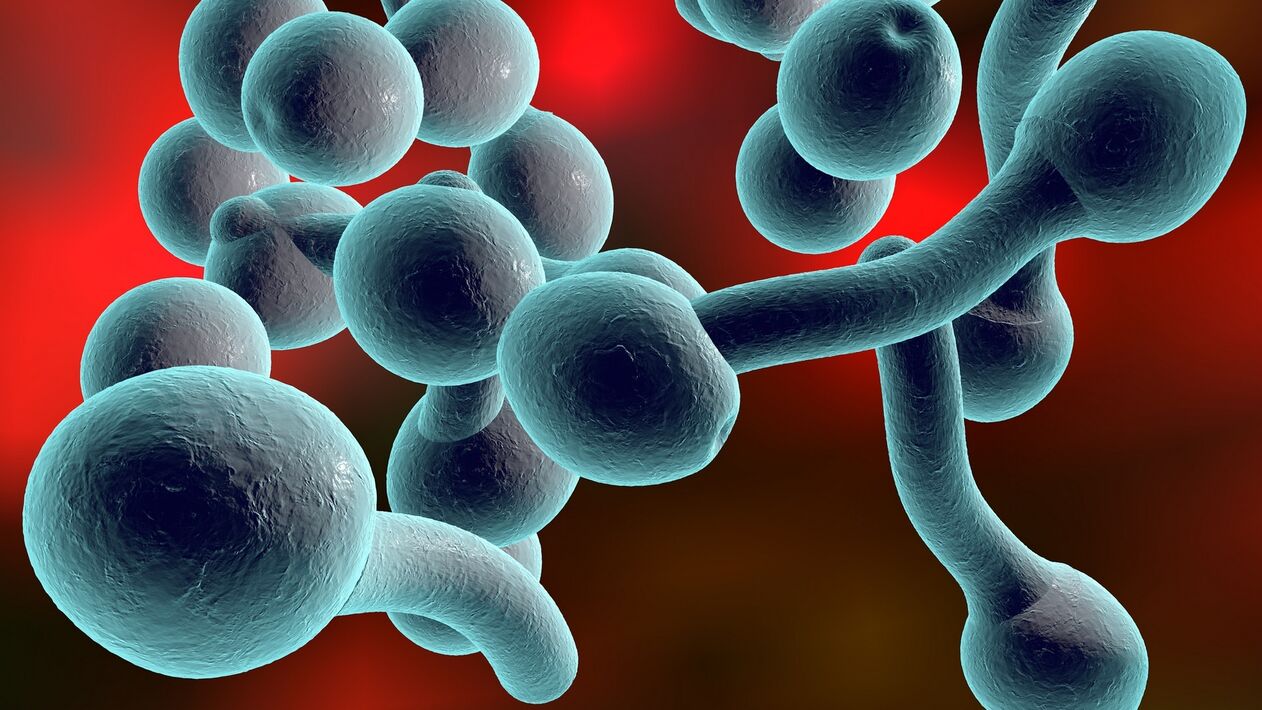
Causes of fungal infections
The development of fungal infections is facilitated by contact with a fungal source. For example, their spores can be in the air, on floor surfaces or in bird droppings. At the same time, to reproduce, fungi need a special environment, which is created when the body's protective function is impaired.
Although athlete's foot can affect anyone, there are certain groups of people who are most susceptible to the condition.
Including:
- people who have undergone organ transplant surgery;
- Cancer patients, as well as people who have undergone chemotherapy and radiotherapy;
- people with diabetes and lung disease.
Fungi can grow on the surface of the skin. But the favorite places for dislocations are skin folds, bends of the arms and legs, that is, all places with high humidity and body temperature. Fungal infections can spread to a small area, such as between the fingers or toes. But some fungi have the ability to infect deep tissue layers. If fungal disease develops in the lungs, it enters the bloodstream, leading to damage to internal organs.
Coccidiosis
This disease is caused by fungi of the genus Coccidioides imitus, which lives in the soil. This microorganism is common in the driest areas of the US, Africa and Mexico. It enters other countries along with goods supplied from these countries.
Signs of coccidioidomycosis
The first symptoms of the disease resemble ARVI and inflammatory processes in the lungs and bronchi. The presence of fungi is indicated by the following signs:
- slight increase in body temperature;
- chills;
- headache;
- feeling tired;
- general weakness of the body.
These symptoms are then combined with chest pain, shortness of breath and dry cough. A few weeks after the pulmonary manifestations, the patient develops a skin rash in the form of papules or nodules that look like warts.
histoplasmosis
This disease is caused by the fungus Histoplasmacapsulatum, which most commonly affects the lungs. In some cases, the fungus spreads to other organs, which, if left untreated, can lead to the patient's death. People with AIDS are susceptible to the disease because their immune systems are very vulnerable.
Signs of histoplasmosis
The acute form of the disease is often asymptomatic, complicating diagnosis and delaying the initiation of treatment. In severe cases, patients have the following symptoms:
- increase body temperature to 40°-41°C
- chills, followed by profuse sweating;
- severe headache and muscle pain;
- chest pain;
- dry cough;
- general weakness.
If left untreated, the disease will become chronic.
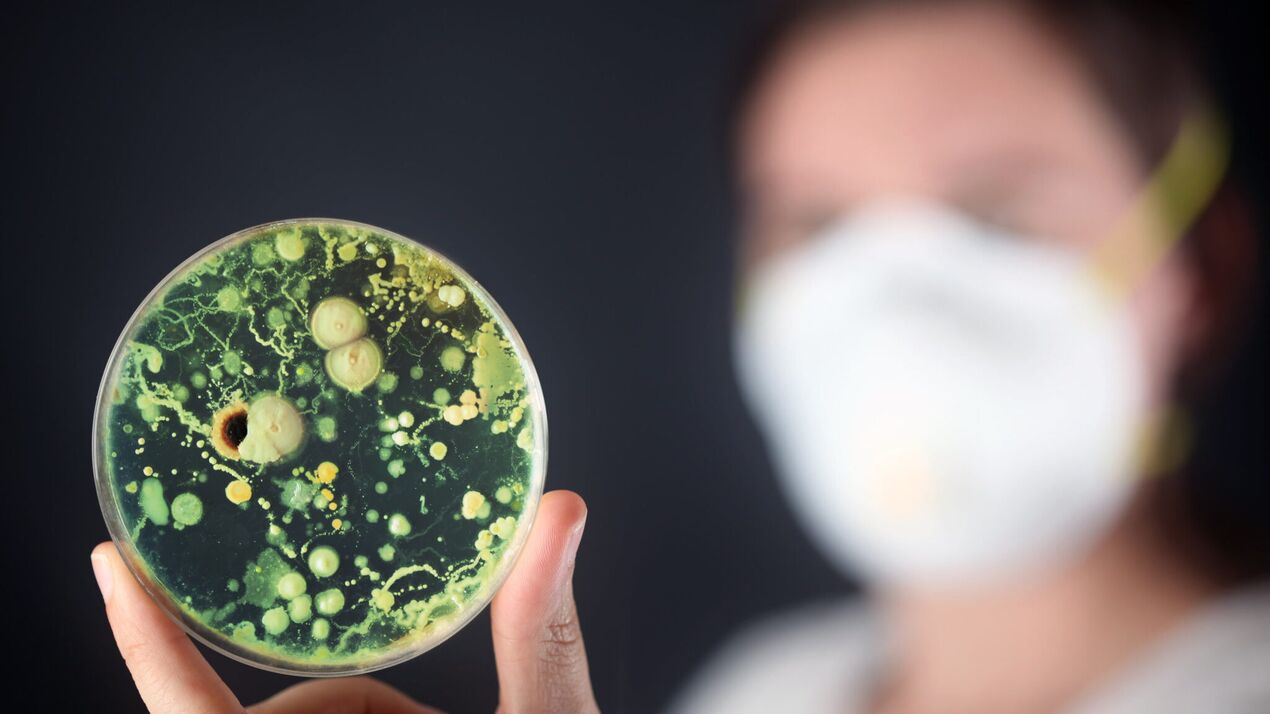
Features of treatment of fungal infections
Treatment of any fungal infection involves the internal use of antifungal drugs, as well as symptomatic treatment to improve the patient's general condition. In severe forms of the disease, the drug is administered intravenously. The duration of treatment depends on the type of fungal infection and its severity. Generally, it ranges from 1 to 3 months. In addition, patients are prescribed drugs that help strengthen the body's immune system.
Preventive action
Fungi are dangerous microorganisms that are difficult to destroy. So any infections are easier to prevent. First of all, it is necessary to strengthen the immune system, which will allow it to independently fight any pathogens.
It is also recommended to comply with the following rules:
- Maintain personal hygiene, wash hands before eating, after each use of the restroom and in public places;
- Thoroughly wash vegetables and fruits;
- Animal feed must undergo prolonged heat treatment;
- Eat sensibly, minimize consumption of simple carbohydrates and sugar;
- body weight monitoring;
- Use antibacterial and hormonal drugs only as prescribed by your doctor;
- Use condoms when having sex.
It is very important that if you detect some signs of fungal infection, consult your doctor and have your entire body examined.
Modern dermatology has a number of antifungal drugs that are harmful to fungi and are not toxic to the human body. They exist in various dosage forms: for local and systemic use.

























